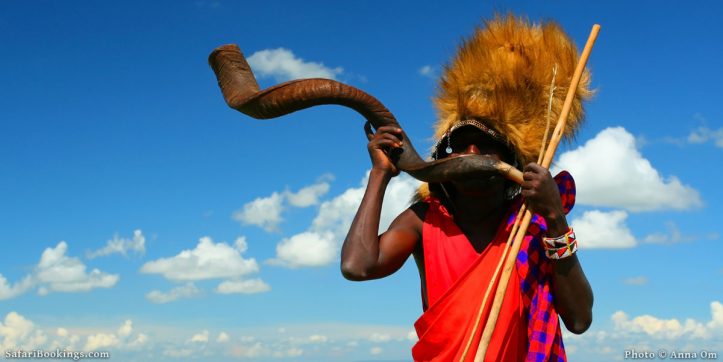
The Masai Mara Conservancies
 By
Stuart Butler
By
Stuart Butler
Stuart is a travel writer and author of numerous Lonely Planet guidebooks, including 'Kenya', 'Rwanda' and 'Tanzania'.
If your impression of Africa is of tawny coat lions streaking after wildebeest then the place you’re thinking about is most likely Kenya’s Masai Mara Conservancies. Perhaps the single most famous protected area in Africa, the Masai Mara offers a wildlife bonanza like no other.
But, fame brings popularity and overdevelopment and savvy safari-goers are now turning their attention more and more to the outstanding Masai Mara conservancies that fringe the national reserve.
Masai Mara Conservancies Explained
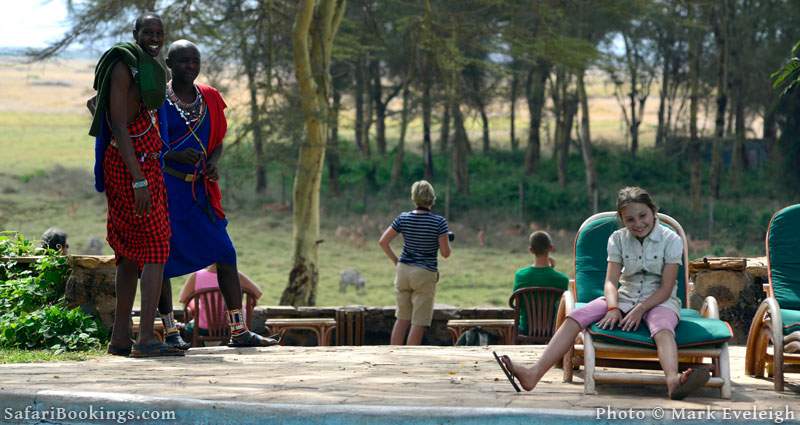 Maasai and tourists
Maasai and tourists
Okay, so let’s get some basics out of the way first. What is a wildlife conservancy and why would I want to visit one? In the past if you went on a Kenyan safari then you were basically confined to a tour of Kenya’s national parks and reserves. However, in the last decade or so that’s changed and the new buzz word is conservancy. A conservancy is an area of community-owned land set aside for the benefit of wildlife conservation. Working in partnership with the safari tourism industry and conservation groups, the local community agrees to lease their land to safari and conservation groups.
African Families Profit From the Conservancy System
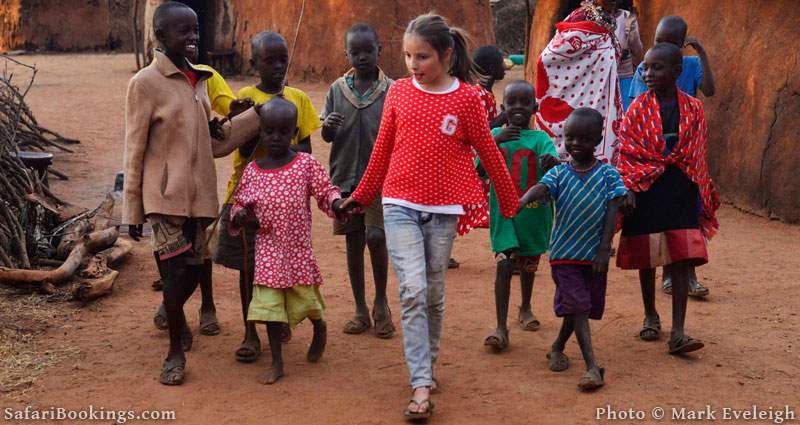 10-year-old Lucia at a Maasai manyatta near Amboseli
10-year-old Lucia at a Maasai manyatta near Amboseli
Every month each family receives a set amount of money for allowing their land to be turned over to wildlife conservation. The community as a whole benefits from educational and health development projects and receives help setting up other sustainable income-generating schemes. Cattle are of course a central pillar of Maasai life and the local community is usually allowed to graze their livestock within the conservancy but in a highly controlled manner. In return for all this the land is primarily devoted to wildlife and safari tourism. The system has been highly successful for both local communities, who have rapidly seen their income and infrastructure improve, and wildlife with populations of almost all animal species increasing fast.
The Masai Mara Conservancies Safari Experience
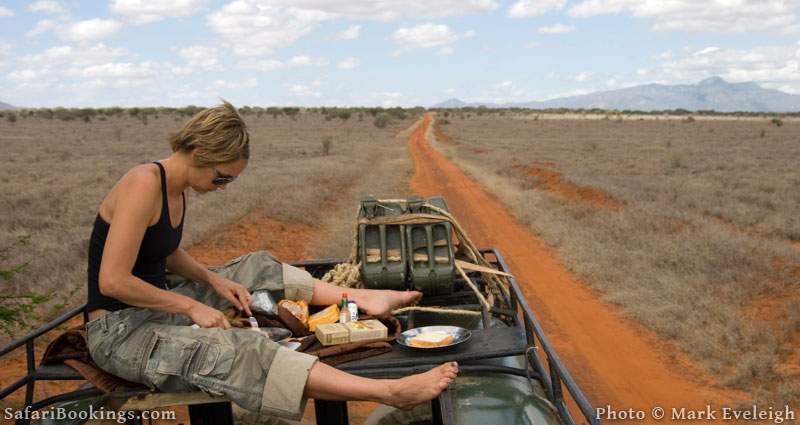 In a Kenyan national park it can be a good idea to eat lunch safely out of harm's way
In a Kenyan national park it can be a good idea to eat lunch safely out of harm's way
It’s not just wildlife and local communities that have done well out of the conservancy model. Put simply, for a wildlife-watching tourist, the Masai Mara conservancies offer one of the best safari experiences in East Africa. The whole conservancy model works on the concept of high-paying, low-number, exclusive tourism and so, unlike in the neighbouring Masai Mara National Reserve, there is a very limited number of small, intimate camps and no queues of minibuses circling like vultures around a lion.
A safari in the Mara conservancies ends up being all about indulgence, superb wildlife viewing and the pleasure of knowing that your presence is directly contributing to the benefit of both local communities and the wildlife. Many different companies offer luxury safaris in the Masai Mara conservancies.
Masai Mara Extraordinary Wildlife
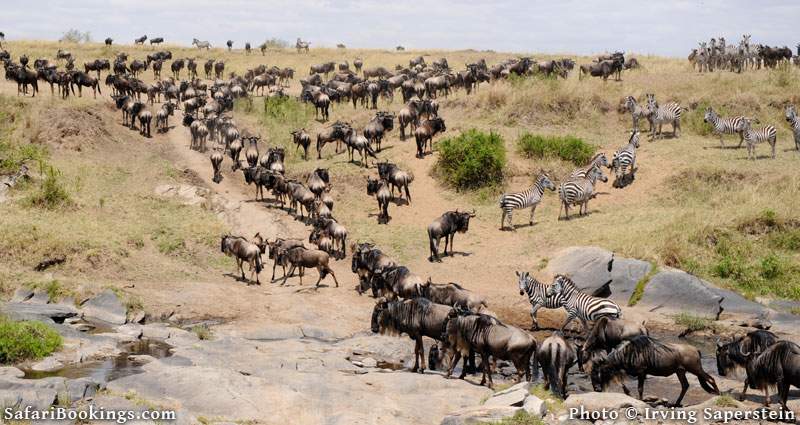 Great migration of the wildebeest, heading out looking for water in Masai Mara National Reserve
Great migration of the wildebeest, heading out looking for water in Masai Mara National Reserve
Some people might worry that the conservancies have less wildlife than the Masai Mara reserve itself. Not true! Borders are fluid around here and the animals roam freely between the reserve and the conservancies and in general the animals appreciate the tranquillity of the conservancies.
In fact, in many ways wildlife viewing in the conservancies is now actually better than in the reserve itself. Between July and October, when the migrating wildebeest are passing through, the plains heave with life and it can be hard to know where to focus your attention. Whatever time of year you visit though you’re in for a Noah’s Ark style wildlife show. Each different conservancy seems to have its own animal showstopper. The Motorogi and Naboisho conservancies, as well the remote Ol Dereski conservancy in the far southeast of the ecosystem, are home to one of the planet’s densest populations of lions.
The scrubby forest of the Olarro and Siana conservancies are real elephant and buffalo hotspots and in Olarro it’s not uncommon to find yourself hemmed in by herds of elephants well over a hundred strong. And then there’s the world-renowned Mara North where everyday can feel like just another day in a David Attenborough documentary. Mara North is also a particularly good base for the river crossings when the wildebeest migration passes through.
Want To Visit Masai Mara Conservancies?
Click on the button below to compare Masai Mara conservancies tours offered by top-rated tour operators.
 By
Stuart Butler
By
Stuart Butler
Stuart is a travel writer and author of numerous Lonely Planet guidebooks, including 'Kenya', 'Rwanda' and 'Tanzania'.
More About This AuthorSafari Tours to Kenya
-
![4-Day Tsavo East, Amboseli & Taita Hills from Coast]()
4-Day Tsavo East, Amboseli & Taita Hills from Coast
$1,096 to $1,305 pp (USD)
Kenya: Private tour
Mid-range Lodge & Tented CampYou Visit: Mombasa (Start), Tsavo East NP, Amboseli NP, Taita Hills WS, Mombasa (End)

Kentau Safaris
4.9/5 – 81 Reviews
-
![7-Day Sopa Lodges Amboseli, Naivasha, Nakuru, Masai Mara]()
7-Day Sopa Lodges Amboseli, Naivasha, Nakuru, Masai Mara
$1,837 to $2,822 pp (USD)
Kenya: Private tour
Mid-range Lodge & HotelYou Visit: Nairobi (Start), Amboseli NP, Lake Naivasha (Naivasha), Lake Nakuru NP, Masai Mara NR, Nairobi (End)

Meektrails Safaris
5.0/5 – 263 Reviews
-
![9-Day Luxury Big Kenya Safari]()
9-Day Luxury Big Kenya Safari
$3,850 to $4,600 pp (USD)
Kenya: Private tourLuxuryLodge & Tented Camp
You Visit: Nairobi (Start), Masai Mara NR, Lake Nakuru NP, Lake Naivasha (Naivasha), Amboseli NP, Tsavo West NP, Nairobi (End)

Spirit of Kenya
5.0/5 – 635 Reviews








 Subscribe to our newsletter
Subscribe to our newsletter
 Follow us on Instagram
Follow us on Instagram





